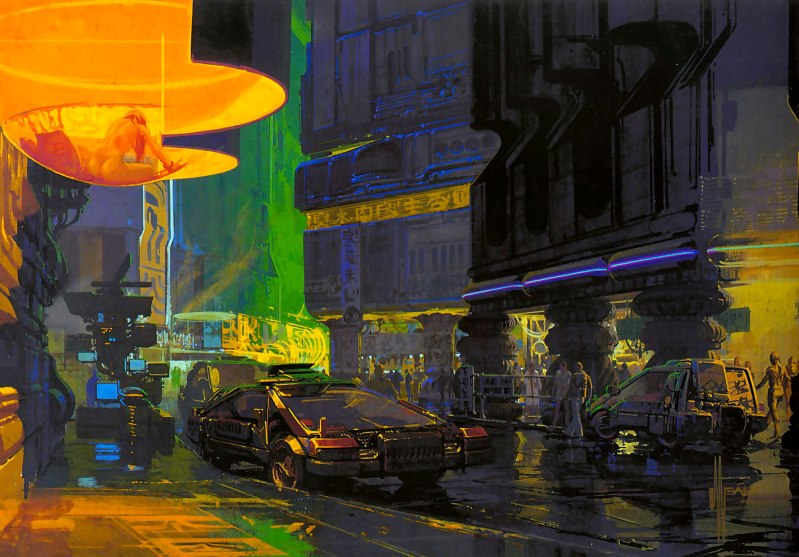What does the future actually look like? Chances are what you see in your mind when presented with that question is heavily influence by Syd Mead. He is an industrial designer, but his body of work — which includes some of the most iconic Sci-Fi movies ever filmed — built a much more interesting job title for him: Visual Futurist.
 Meet Syd Mead as he presents a keynote talk at the 2017 Hackaday Superconference this November 11 and 12 in Pasadena, California.
Meet Syd Mead as he presents a keynote talk at the 2017 Hackaday Superconference this November 11 and 12 in Pasadena, California.
Philip K. Dick wondered Do Androids Dream of Electric Sheep?, but when it came time to build those sheep and the world they live in, director Ridley Scott looked to Syd Mead to determine what the future in Blade Runner actually looked like. He invented a world, one that was actually built through the practical sets and props widely used in the days before computer graphics became the norm. Syd’s work is also seen in Star Trek: The Motion Picture, Alien, and the iconic designs for the movie Tron. And his prolific work has continued to appear on the silver screen ever since, with Elysium and Tomorrowland as some of his more recent work.
How does one invent the future, even through decades of progress? That’s the role of hardware creators — to envision what we want and need tomorrow, not today or yesterday. Syd Mead is a hardware creator and his hardware has been built time and again to inspire all of us for where we’re going with technology. Take that ride along with Syd at the Hackaday Superconference. Get your tickets now.
[Main image credit: Blade Runner concept art by Syd Mead]

















OH how I wish.
everyone else have a good time.
I’d love to go this year, but with the cost having doubled again, I’ll have to pass.. Looking forward to the recorded events eventually!
The Blade Runner 2049 hype is real!! So excited for this. :)
I’m very excited. The trailers make it look amazing.
Only thing about the future is how dated it’ll look when we get there.
I’m even more excited for SuperCon now. Syd Mead! Tron and Aliens and Blade Runner and Johnny 5 and all his industrial design work… I can’t wait to hear what he’s got to say to all us hackers.
I was a huge fan of Syd Mead when I was younger and spent a lot of money of books showcasing the work of artists like him, however these days I don’t think he has a clue what the future will be like. Once you realise that AI and robotics will dominate architecture, building and manufacture you realise that the future will be very geometrically complex with forms being algorithmic and parametric rather than the manifestation of human limits. It will not look like it is built by humans, because it will not be. It will be more like living inside a mandelbulb fractal, except a 1000 times more amazing than even that.
https://www.google.com/search?q=mandelbulb+city&num=50&newwindow=1&safe=off&tbm=isch
Maybe. Mead has been thinking about practical applications of embedded technology for longer than most Hackaday readers have been alive. Many of his futuristic gadgets from the 80s could be trivially done with a Pi Zero. But really I just want to live in the stylish future he’s envisioned: https://www.google.com/search?q=The+World+of+Syd+Mead&source=lnms&tbm=isch
Yeah but so have heaps of people and there are SciFi writers that have covered pretty much every idea you could think of more than 50 years ago, I know because I’ve spent the last 5 years surveying their work with that specifically in mind.
As for what I was talking about, rather than that diversion, check out the work of Hal Tenny.
https://pixels.com/profiles/hal-tenny.html?tab=artwork
Tenny is, in a limited and stylistically constrained way, on the right track with regard to how organic yet algorithmic the future will look.
On a side note, in the early 1990s I worked at a major university and did some mock-ups of devices that were considered interesting but technically impossible with current chips, they looked a lot like how smart phones and watches look today. It was a side project and nothing to do with the core interests of the faculty I worked for so nobody thought to patent them or at least make sure that they were noted as priior art. i.e. Apple didn’t invent the iPhone look and feel. True story bro.